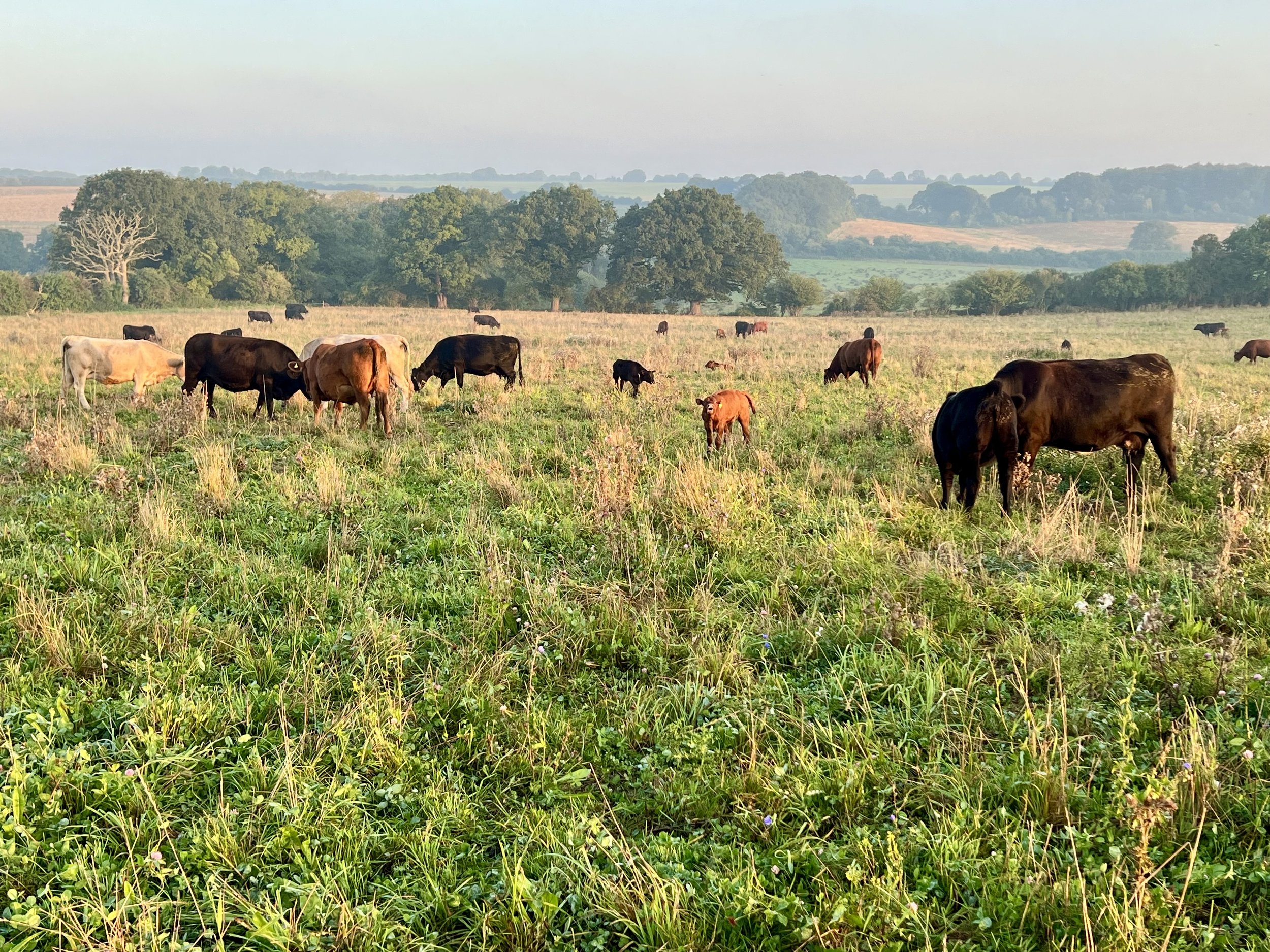
Pasture For Life
Their Natural Diet
Cattle have evolved over millions of years to eat an incredibly broad range of plants, over 200,000 species worldwide by some counts. This includes grasses, forbes, legumes, herbs, shrubs and trees.
They need this diversity to give them access to all the different minerals and nutrients that they need.
Some animals have been bred to only perform with high inputs of cereals, soya and maize. We need to breed an animal that thrives purely on pasture.
Cattle that only eat a large diversity of grasses, forbes and browse will be significantly healthier than animals fed large amounts of inappropriate starches in order to fatten quickly or produce large quantities of milk.
Growing Pasture
Cattle’s digestive system is set up to take in large amounts of nutrient-poor material, ferment it into usable products and absorb them.
Interestingly, the bacteria that ferment the fibre and starches in their rumen make up a significant amount of their nutritional requirements.
Forage grows in a sigmoidal curve where there is an exponential growth rate in the middle.
To grow the maximum amount of forage we want to keep it in the exponential growth rate by not grazing too short or hard and not leaving the forage too long.
There are however long term gains to be made by leaving pastures to senesce.
Grazing Systems
All grazing systems, whether it be Mob Grazing, Technograzing, Precision Grazing, Management Intensive Grazing or any other system, only vary 3 things.
Grazing Period - How long the animals are on a certain piece of pasture, measured in hours or days.
Stock Density - How many animals there are in a certain area of pasture, measured in Animal Units or KG Liveweight per Acre or Hectare.
Recovery Period - How long after you stop grazing till you come back to that paddock or field, measured in days.
What is the optimal amount of each of these? It depends on your context.



